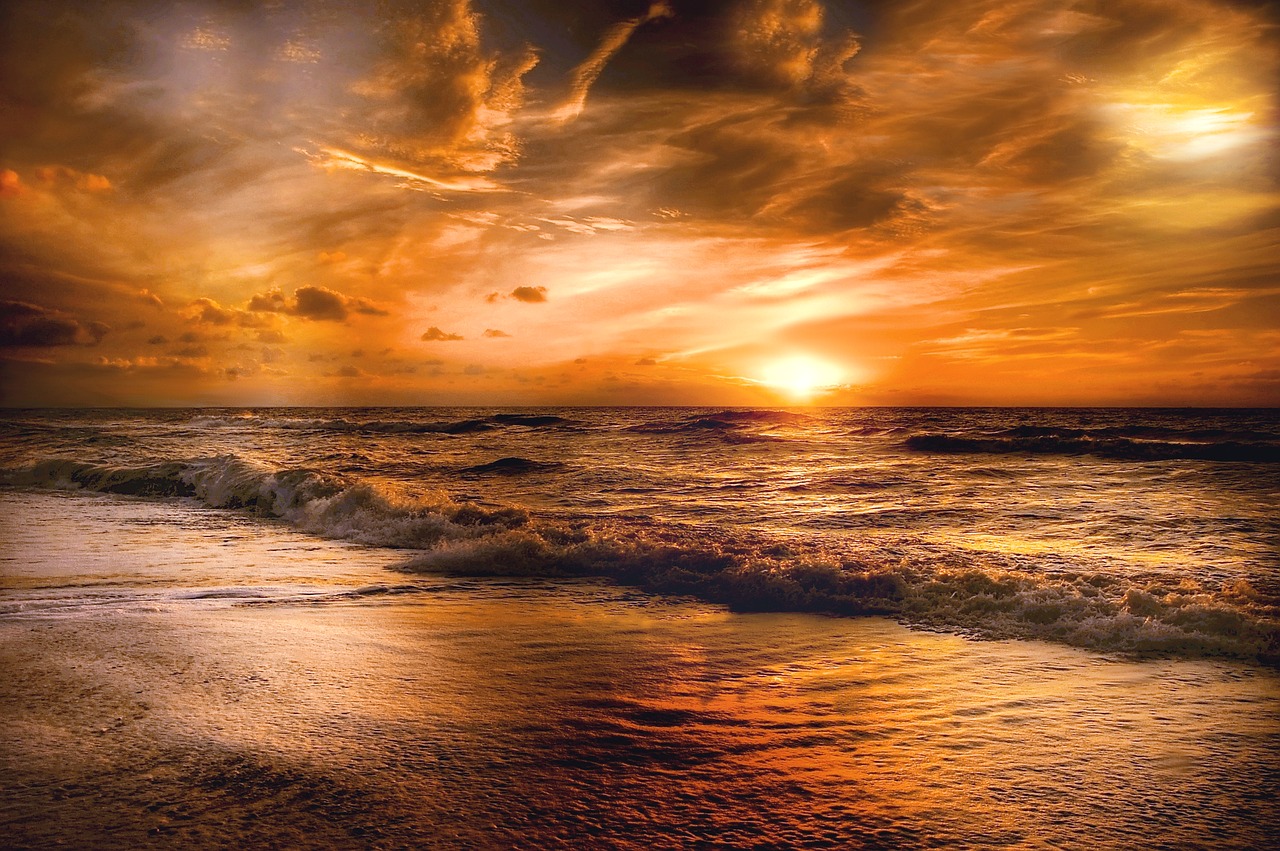The first thing you usually hear when someone characterizes a digital camera is its resolution, measured in megapixels. And as designated by our human nature, we perceive that the more is the better… In this article I am going to explain what megapixels are, where the opinion “the more the better” came from, and why I believe that it is not relevant any more nowadays. I will try to convince you to focus on other characteristics rather than the megapixels when choosing a digital photo camera.
What are megapixels?
First of all, what are megapixels in a digital camera and in a digital image? Obviously, a megapixel is a million of pixels :-). A digital image consists of many colored dots, called pixels (stands for “picture elements”). These dots are so tiny and so densely arranged that a human eye cannot distinguish them. We perceive this collection of pixels as a single entity, the image. When speaking about the image resolution, we refer to the number of pixels (millions of them) in a digital image. The number of megapixels in a digital camera is nothing else than the resolution of photographs it produces. Normally it also closely corresponds to the number of sensor elements on the digital camera sensor (sensitive to light elements collecting pixel colors).
For an image to represent something meaningful, it should have a sufficient number of pixels. See how the same image (an eye) is represented by various numbers of pixels, from over 73 thousand to 192:
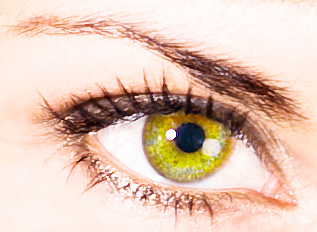
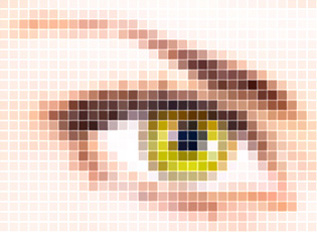
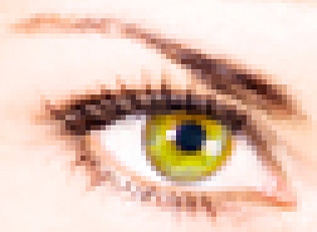
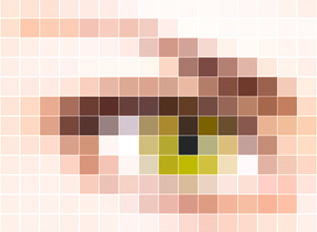
In the first image, the pixels are too small to be visible. In the second one, you can most probably see some blocky edges, these blocks are the pixels. In the last two images, separate pixels are easily distinguishable.
In this example, using 73 thousand pixels to represent the eye is obviously a good idea. But what if we use even more? Would it be better to have ten million pixels (which is ten megapixels)? Unless you zoom in even further to see very fine details (I don’t know why one would want that in our example), I think you would not even realize that there are 136 times more pixels. This is because the human eye can hardly perceive a greater resolution, and most probably your monitor would not be able to display the image at such a great resolution… But, your browser would need to load about 136 times more data, and that might be quite noticeable… Hence, I believe it is not a good idea to use more pixels for this image.
Why more megapixels used to be better?
The first Nikon professional digital single-lens reflex camera (DSLR), Nikon D1, which appeared in 1999, has 2.6 megapixels (2000×1312 pixels). Is this enough or not? Depends on what you use the images for.
Let’s say you view the image full-size on your computer monitor. My 15-inch MacBook Pro has the screen resolution of 1680×1050. This means that it displays 1680 pixels horizontally and 1050 pixels vertically. When displaying a larger resolution image on this monitor, I do not get a better quality, because the image size is reduced to fit on the monitor. One monitor pixel represents more than a single image pixel in this case. Obviously, because the Nikon D1 resolution is larger than my monitor’s resolution (both horizontally and vertically), I would gain absolutely nothing from a larger image resolution.
On the other hand, the 30-inch Apple Cinema monitor, which is very popular among photographers, has the resolution of 2560×1600. This is more than the number of pixels produced by Nikon D1, both horizontally and vertically. To display a Nikon D1 photograph full-screen, the computer needs to up-sample the image. What happens is that new pixels are created, and their colors are guessed based on the surrounding pixels. Significant up-sampling is never good, because it usually noticeably degrades the images quality. See an up-sampling example (rather exaggerated to make the difference very visible), the 2.9 megapixel photo up-sampled to 73.5 megapixels. Is the up-sampled photo nearly as good as the original?

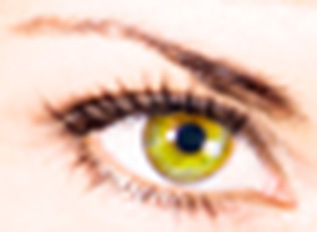
Thus, the Nikon D1 resolution is sufficient for viewing the image on a 15-inch MacBook Pro screen, but not on a 30-inch Apple Cinema display.
Now let’s say we want to print photos on paper. Assume we use the print resolution of 300 pixels per inch, meaning that 300 image pixels will fit in one inch of the printed image. This is the highest widely used print resolution I have heard of, it is used in top magazines. Note that this print resolution (measured in image pixels per inch, or ppi) is not the same thing as your printer’s resolution (measured in dots per inch, or dpi). Your printer is likely to use multiple dots to represent a single image pixel, thus dpi should be higher than ppi. By selecting the print resolution of 300 ppi, we push our print quality requirements to the maximum. In fact, we most probably can be very satisfied with a lower print resolution.
How large will our print of a Nikon D1 photograph be? This is easy to calculate. The width of the Nikon D1 image is 2000 pixels, and we print it with 300 pixels per inch. Thus, the print width will be 2000/300 = 6.7 in., or approximately 17 cm. The print height is 1312/300 = 4.4 in., or 11.2 cm. Is this what you want? If you target the standard 4×6 in. print size, than Nikon D1 provides enough megapixels for your needs. As to me, if I ever print photos, I do on something closer to the A4 format (8.3×11.7 in.) to hang it on a wall. This means that the Nikon D1 resolution is not sufficient for my printing needs. Again, note that we assume a very high print quality requirement. The print size we get at 300 ppi is approximately twice smaller than A4. Thus, with a twice lower print resolution (about 150 ppi), I would get the desired print size with Nikon D1. Will the quality satisfy me? I am not sure, 150 ppi is considered the low end… However, I would need to make an experiment to find out exactly. Most probably, for hanging a photo on a wall, it would be enough. You don’t often come close to wall pictures and inspect all their fine details, right?
You can see that Nikon D1’s 2.6 megapixels can be considered insufficient for some purposes. This is why at the early digital camera days, the main camera manufacturer focus was on increasing the resolution. The number of megapixels was the main digital camera evaluation metric. And this approach survived until these days, although it is far not so relevant any more. This situation is similar to evaluating the computer processor by its frequency, which is also based on the past situation, and is not so relevant anymore.
How many megapixels do I really need?
Here I assume that you are not a professional photographer with some specific high-resolution needs, such as printing on huge billboards. If you were one, you wouldn’t have read an article titled “What are megapixels? How many megapixels do I need?” :-). I assume that most probably, you are a photography enthusiast creating photos for yourself, with the purpose to view them on screen or print on some reasonable format :-).
You can, of course, calculate exactly how many megapixels you need in your digital camera, based on your goals, as described above. I would suggest that 5 megapixels is quite enough for any non-professional needs. My old Canon S2 IS has 5 megapixels, producing 2592×1944 images. This is enough to show full-screen on the Apple Cinema 30-inch monitor, which is one of the largest screen resolutions on the market. Printed on paper at 200 ppi (which is a reasonably good print quality, I believe), such an image is 13×9.7 in. (32.9×24.7 cm), which is larger than the A4 paper format.
On the other hand, don’t forget that technology constantly progresses, but your family photos are with you for the whole life. I know people who created photos at the minimum currently required resolution and later regretted about it. Who knows what resolutions will be used in a few years, maybe huge wall-sized high-precision screens will appear in every house… Looking ahead and foreseeing possible resolution needs increase, I double my suggested resolution up to 10 megapixels.
About every digital camera manufactured today offers at least 10 megapixels (I do not count cameras on mobiles, of course). This is why I say that the megapixels are irrelevant when choosing a camera to buy nowadays. In fact, I would go even further and suggest that it might be better to choose a lower resolution digital camera.
Why fewer megapixels might even be better?
When working with photos of a greater resolution than you actually need, you get no advantages, and the following disadvantages:
- You spend much more time for post-processing in software, because the computer has to do much more work.
- You need much more storage space to keep the photos.
Sure, you can solve these by configuring your camera to produce smaller-resolution photos. You can also reduce the image size later in software (and with software supporting batch processing, such as Photo Sense, you can do this for many photos relatively quickly). However, there is another aspect which you cannot change.
This is about how many sensor elements there are on the digital camera sensor. Many people, including me, believe, that given a fixed sensor area and technology generation, a sensor with fewer elements will produce better image quality, less noise etc., than a sensor with more elements. This is because with a fixed total sensor size, a 20 megapixel sensor will have two times smaller sensor elements than a 10 megapixel sensor (it must fit 20 million of these elements to the given area instead of 10 million). It seems logical that the larger every sensor element is, the more robust it is, and the better results it generates. This assumption is enforced by several observations from my experience:
- that my full-frame Nikon D700 produces significantly better results than Nikon D200, especially when it comes to low-light photography. Full-frame means that the sensor size approximately matches the size of a 35 mm film (36×24 mm). Nikon D200 has a crop factor of 1.5x, which means that its sensor’s diagonal is 1.5 times smaller than full-frame.
- that any DSLR camera produces better results than small point-and-shoot cameras (DSLRs have significantly larger sensors, it is not for nothing that the cameras are larger).
- that cameras on mobile devices, with their super tiny sensors and lenses, are not cameras at all 🙂
Obviously, when configuring a camera to shoot at lower resolution, you do not change the physical sensor structure, but just instruct the camera to reduce the image size within the camera, in software. I am not sure, perhaps some cameras use a subset of their sensor elements instead. Anyway, they don’t substitute the sensor elements with better (larger) ones. Thus, for the image quality, it might be better to choose a camera with a smaller maximum resolution. Unless, of course, you wish to invest into a camera with a larger sensor, such as full-frame, or even medium format (those cameras priced at dozens thousand Euros).
Don’t forget that this “larger sensor elements mean better quality” is only my (and many other photographers’) opinion, it is not confirmed by any facts. My comparison of Nikon D700 to Nikon D200 is also not very fair, because Nikon D700 is a newer-generation camera, its better quality might be due to a newer technology rather than the sensor size.
